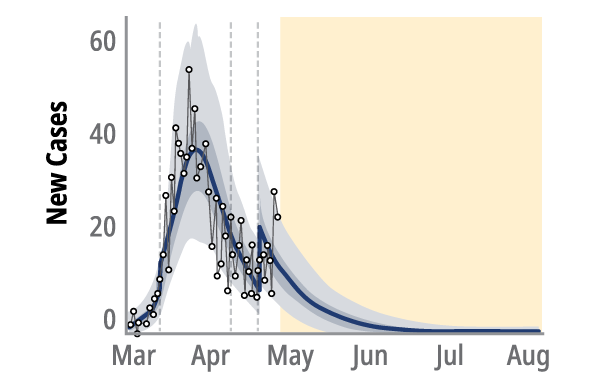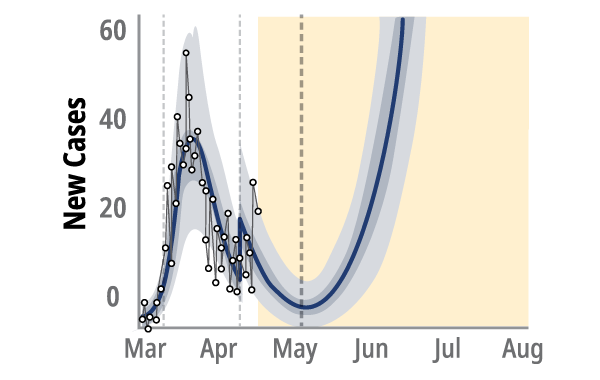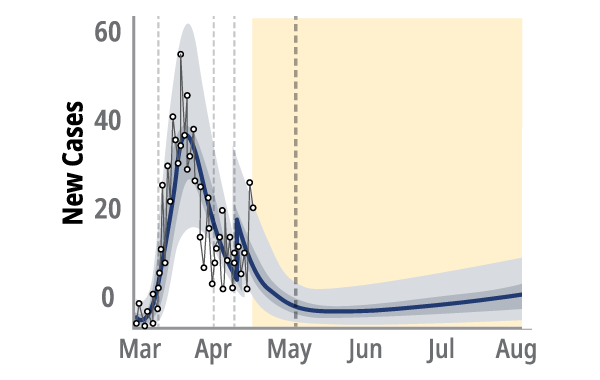One of anti-covid measures in Poland was to severely limit the number of passengers on all type of public transportation vehicles. I'm not saying that helped but at least some measures were applied.
Same here in BC Canada. Buses and metro are running half-full, the other half is marked to be left vacant. I'm trying to avoid city transit now but didn't notice problems with bike space on trains. Either restrictions worked, or low population density did, - or maybe both.
New cases per day in BC are not increasing now - the graph below from a week ago, yellow area is projections assuming keeping the current restrictions - BUT note a spike in late April, it could be a plateau now, not a downward slope yet:
BC is not as densely populated as Ontario and Quebec - this TAD explains a better situation, though most of the province live in one city - Vancouver. It is estimated that people have now reduced their contacts to 30% of pre-Covid times. Simulation models show that the
ONLY scenario when the epidemic will pass this year is when people will keep contacts at the current 30% (yellow area on the graph above).
If we resume contacts at 100%, it will spike again, and 80% is same bad - projections at 80% contacts, yellow area:
So they've decided that it is "safe" to gradually double the contacts within the next 3-4 months, reaching 60% of pre-Covid times by late August. I doubt they will be able to keep it at 60%, not everybody will follow the rules. At 60% the epidemic would linger indefinitely, increasing slowly - yellow area below:
No changes were made to bike lanes, I doubt they will improve or build new ones this year.
Complete opening with big concerts and live sports events is not even planned yet, and is conditional on
"at least one of the following; wide vaccination, “community” immunity, broad successful treatments". Community immunity will take forever - this would require 70% population to become infected, Canada is now at 0.2%. There won't be a vaccine or successful treatment for at least a year.



:max_bytes(150000):strip_icc()/__opt__aboutcom__coeus__resources__content_migration__treehugger__images__2018__04__vienna-9798730e073a49b6892d472bb874ebe1.jpg)
